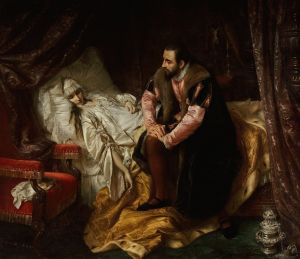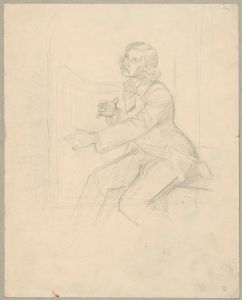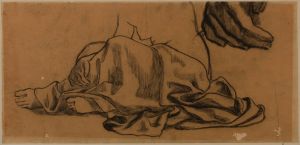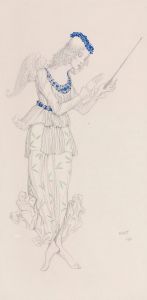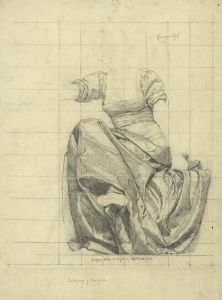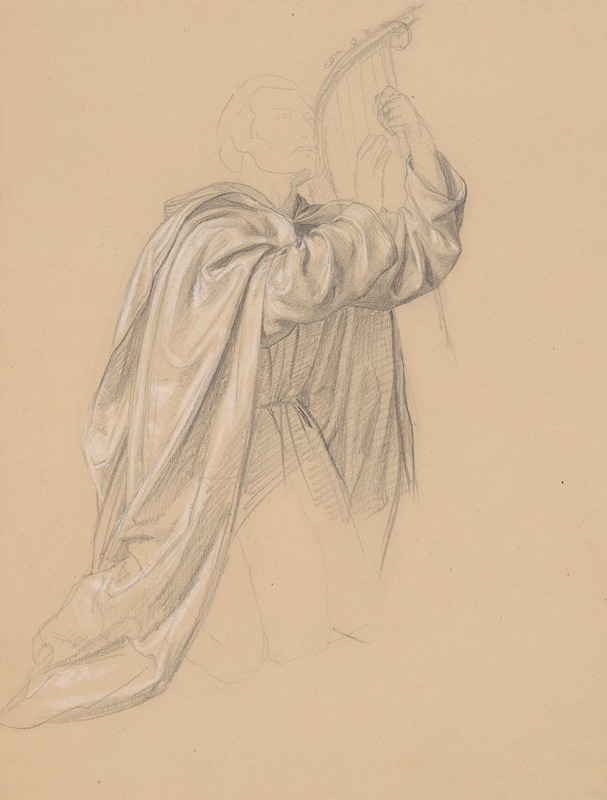
Study of David’s robes for the painting ‘The Immaculate Conception of the Blessed Virgin Mary’
A hand-painted replica of Józef Simmler’s masterpiece Study of David’s robes for the painting ‘The Immaculate Conception of the Blessed Virgin Mary’, meticulously crafted by professional artists to capture the true essence of the original. Each piece is created with museum-quality canvas and rare mineral pigments, carefully painted by experienced artists with delicate brushstrokes and rich, layered colors to perfectly recreate the texture of the original artwork. Unlike machine-printed reproductions, this hand-painted version brings the painting to life, infused with the artist’s emotions and skill in every stroke. Whether for personal collection or home decoration, it instantly elevates the artistic atmosphere of any space.
Józef Simmler, a prominent Polish painter of the 19th century, is known for his historical and religious compositions. One of his notable works is "The Immaculate Conception of the Blessed Virgin Mary," which showcases his skill in capturing religious themes with depth and sensitivity. A preparatory study for this painting, titled "Study of David’s Robes," provides insight into Simmler’s meticulous approach to his craft.
Józef Simmler was born on March 14, 1823, in Warsaw, Poland. He studied art in various European cities, including Dresden, Munich, and Paris, which were significant centers for artistic development during that period. Simmler’s education and exposure to different artistic styles and techniques greatly influenced his work, allowing him to develop a unique style that combined elements of realism with a deep appreciation for historical and religious subjects.
"The Immaculate Conception of the Blessed Virgin Mary" is one of Simmler’s religious masterpieces. The painting itself is a representation of the Catholic doctrine of the Immaculate Conception, which holds that the Virgin Mary was conceived without original sin. This doctrine was a popular subject in religious art, especially following its formal definition by Pope Pius IX in 1854. Simmler’s interpretation of this theme reflects the spiritual and theological significance of the subject matter.
The "Study of David’s Robes" is a preparatory work that Simmler created as part of his process in developing the final painting. Studies like this were common practice among artists, allowing them to explore different elements of their compositions, such as drapery, lighting, and anatomy, before committing to the final piece. In this study, Simmler focused on the intricate details of the robes, demonstrating his attention to the textures and folds of the fabric. This attention to detail is a hallmark of Simmler’s work, showcasing his dedication to achieving realism and depth in his paintings.
Simmler’s studies and preparatory works are valuable for understanding his artistic process. They reveal the careful planning and consideration that went into each element of his compositions. By examining these studies, art historians and enthusiasts can gain insight into how Simmler constructed his scenes, balanced his compositions, and brought his subjects to life with a sense of realism and reverence.
Józef Simmler’s contributions to Polish art are significant, and his works continue to be appreciated for their historical and religious importance. His ability to convey complex theological themes through his art has left a lasting impact on the cultural heritage of Poland. The "Study of David’s Robes" is just one example of his dedication to his craft and his ability to capture the essence of his subjects with precision and grace.





